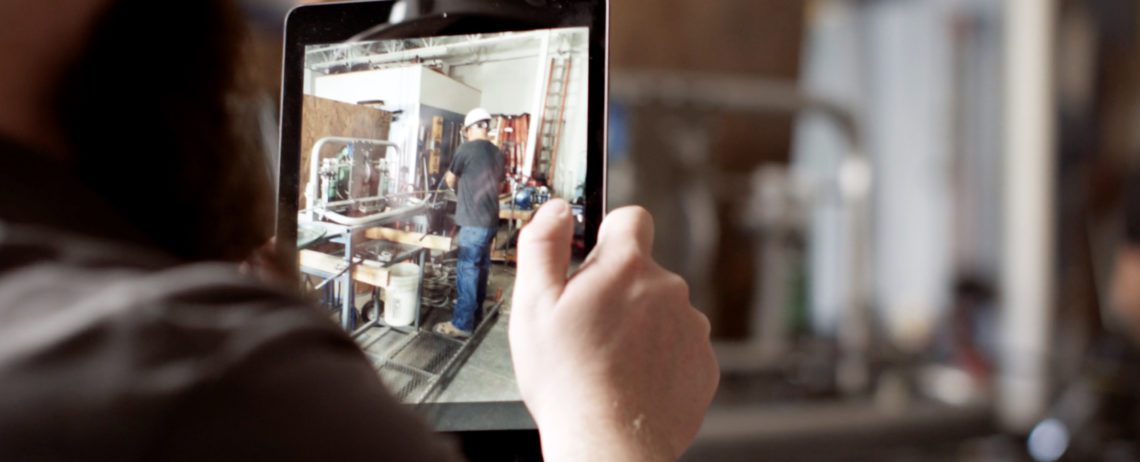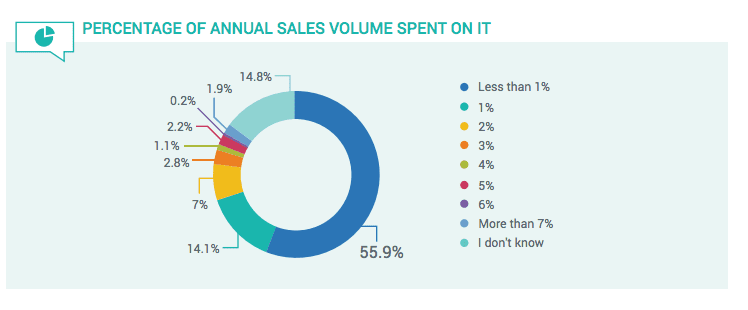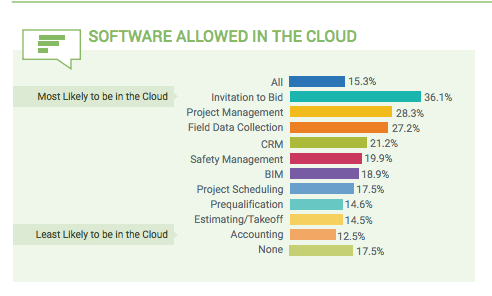Construction Tech Trends – What You Need To Know
Industry Trends | By | 13 Jan 2017 | 4 minute read

You know that technology is the key to keeping your construction firm competitive. But you don’t have the resources to try out every new trend you read about. That’s why JBKnowledge creates a construction technology survey each year. It gives you a look into what’s working in other firms and briefs you on new technologies to watch in 2017.
JBKnowledge, a construction technology company themselves, conducts a survey with about 2,600 participants in the construction industry. How does your company perform against some of these benchmarks? Are you an early adopter or a laggard in construction tech?
IT Budgets – Enough To Support Burgeoning Technology Efforts?
Over half of survey respondents reported spending less than 1% of annual sales on IT. This creates an interesting paradox in some future-focused construction firms. As they’re moving to adopt process improvements like integrated project delivery (IPD), virtual design and construction (VDC), or building information modeling (BIM), companies focus only a small percentage of revenue on technology efforts.
 Graph courtesy of JBKnowledge
Graph courtesy of JBKnowledgeMany respondents in the survey had questions regarding what constituted an IT department. Some were considered IT departments if they handled software, troubleshooting, network maintenance and hardware. Others were dedicated specifically to one facet of technology. Larger construction firms obviously favored dedicated IT departments more. However, there was hardly an increase in the number of IT employees in construction between 2015 and 2016.
Technology as a whole is seeing a huge push in self-service technologies through mobile apps and cloud services. It’s become easy to trial and implement a business service without getting IT involved. This certainly doesn’t mean that IT is any less important. It just means that many employees are more empowered to find technology to solve their specific problems. In years past, many people in an organization needed to feel the same pain point in order for IT to get involved. Now, employees can find and implement their own solutions. This allows IT to focus on the large technology pain points of the organization.
Technology isn’t just for the IT department anymore
Interestingly, job titles in IT are not held solely by the traditional “systems and controls” managers. They’re also in titles like “director of operational excellence” or “project manager”. This again points toward a trend in technology permeating the entire organization, not just one group in the office. Since the introduction of mobile construction apps about a decade ago, they’ve become a staple for many employees in the field.
Using the cloud for easy access and enhanced communication
15% of survey respondents replied that they have all business functions available in the cloud, making it accessible from any device or location. Sensitive data associated with accounting, estimating and pre qualification is less likely to be stored in the cloud. About 20% of respondents report using cloud computing for safety management. Safety management is a particularly good candidate for leveraging cloud technology. It allows enhanced communication between the field and the office. It also provides managers the opportunity to visualize data related to safety standards.
 Graph courtesy of JBKnowledge
Graph courtesy of JBKnowledgeThe Year of Mobile
Mobile use has continued to grow for the last few years and in 2016, 80% of all respondents see mobile devices as either “important” or “very important”. In 2012, only about 60% of construction workers saw mobile as important. Millennials, unsurprisingly, also appear to be more likely to see mobile technology as very important so as they continue to grow as a part of the construction workforce, companies will need to provide the technology to keep up with their priorities.
One respondent noted that just because certain companies offer a mobile solution that doesn’t always translate to a great app. Many software companies offer a mobile version of their product as a box to tick in their offering. Did we mention that SafetyCulture is a mobile-first product? That means we don’t just pay lip service to mobile applications, but place special emphasis on that functionality? Just had to bring it up.
Some trends in mobile usage in 2016:
- Mobile devices provided by the construction company decreased from 2015 to 2016, meaning employees are more likely to use their own personal devices for work
- Wearables have seen a huge increase in personal usage but a slight decrease in work usage
- iOS is the most common mobile operating system for construction companies
- However, both Windows and Android usage has increased pretty dramatically since 2015
Systems need to work with one another
One of the biggest challenges with implementing new technology is the integration with existing technological solutions. Otherwise, employees must resort to clunky CSV files, manual entry or a time and resource-intensive custom built integration. Thanks to the low budgets we saw in the paragraphs above, we know that many companies lack the resources to support custom-built integrations.
Many construction companies still use manual processes like pen and paper or data entry in spreadsheets to collect data in the field and communicate it back to the office.
Safety Mobile Apps
An astounding 53% of survey participants do not use safety mobile apps on their construction sites. Because most companies have at least one employee responsible for safety throughout the organization, we’d expect to see higher technology budgets allocated to safety mobile apps. They not only provide compliance for OSHA visits, but also allow field workers to generate data that gives a high level overview of how safety initiatives are performing overall. With proper safety analytics, companies can focus not just on adhering to compliance standards, but on enhancing overall project standards and logistical improvements. Enhancing communication between the office and field breaks down time-consuming and costly information silos.
If you’d like to learn more about how three safety experts use mobile technology to create a safer worksite, check out this article.
Comfort with emerging technology
Nearly 80% of respondents rated their comfort with emerging technology at a 7 or higher on a 10-point scale. However, some commenters voiced concerns over having “product champions”, so while the technology is there, managers are concerned that the implementation may fall flat. One hypothesis proposed about the slow adoption of technology in construction centers around the lack of funding for IT. However, it’s clear from survey responses that another issue lies in procedural adoption as well. This becomes a bit of a chicken before the egg question – is the issue a lack of funding or a lack of adoption? Technological systems do not offer gains in efficiency or cost without proper implementation and adoption. It stands to reason that organizations are hesitant to invest heavily in systems that employees do not fully leverage.
How did your construction company rank? What are some of the biggest construction tech trends your firm is working on in 2017? Share in the comments.
Important Notice
The information contained in this article is general in nature and you should consider whether the information is appropriate to your specific needs. Legal and other matters referred to in this article are based on our interpretation of laws existing at the time and should not be relied on in place of professional advice. We are not responsible for the content of any site owned by a third party that may be linked to this article. SafetyCulture disclaims all liability (except for any liability which by law cannot be excluded) for any error, inaccuracy, or omission from the information contained in this article, any site linked to this article, and any loss or damage suffered by any person directly or indirectly through relying on this information.





